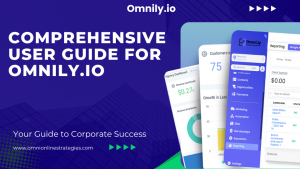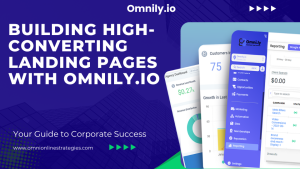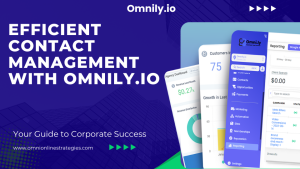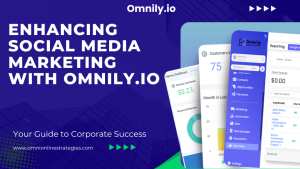In this post, we’ll explore some tips and tricks to help you optimize your product page and drive more sales. From crafting compelling product descriptions to using high-quality images, we’ll cover everything you need to know to create a product page that converts.
In today’s highly competitive online market, it’s crucial for businesses to create product pages that not only attract potential customers but also convert them into loyal buyers. A well-designed and optimized product page can make a significant difference in the success of your online business.

In this article, we’ll share some tips and tricks to help you create a product page that converts.
Here are some tips to get you started:
1. Craft Compelling Product Descriptions
Product descriptions are critical in online marketing as they help potential customers understand what the product is all about and how it can benefit them. To create an effective product description, you need to focus on highlighting the benefits of the product rather than just its features.
The benefits of a product are what the customer will gain from using it. It’s essential to communicate the value that your product will bring to your potential customers. Make sure to describe how your product can solve a particular problem, make their life easier, save time, or offer a unique experience.
Using bullet points can make your product description more digestible and easier to scan. This way, customers can quickly see the main features and benefits of the product without having to read through a long paragraph of text.
It’s also crucial to include any unique selling points of your product that sets it apart from competitors. What makes your product special and why should customers choose it over others? Highlighting your unique selling points can help your product stand out and increase the chances of making a sale.
Including relevant keywords in your product description can also improve your SEO and help your product rank higher in search engine results pages. This can increase your product’s visibility and attract more potential customers to your website.
Overall, an effective product description should be clear, concise, and persuasive. It should focus on highlighting the benefits of the product, use bullet points to make it easy to read and scan, and include any unique selling points and relevant keywords to improve SEO.
2. Use High-Quality Images
Visuals play a vital role in creating an engaging and successful product page. High-quality images can help customers visualize the product and make a purchasing decision. Here are some tips for using visuals effectively on your product page:
Use multiple images: Providing multiple images of your product from different angles and in different settings can help customers understand how the product looks in real life. This can increase their confidence in the product and make them more likely to purchase it.
Use high-resolution images: Ensure that your product images are clear and high-resolution. Blurry or low-quality images can make your product look unprofessional and decrease customer trust.
Use a zoom feature: A zoom feature allows customers to see the details of your product more closely, making them more confident about the quality and features of the product.
Use lifestyle images: Lifestyle images can help customers envision themselves using the product and increase their emotional connection to it. For example, if you’re selling a backpack, you can include a lifestyle image of someone wearing the backpack on a hike.
Use consistent branding: Make sure your images are consistent with your branding to create a cohesive and professional look across your product page.
By incorporating these tips, you can create an engaging product page that showcases your product in the best light possible, ultimately increasing the likelihood of customer conversion.
3. Include Customer Reviews
Customer reviews are an essential aspect of online shopping, as they provide potential buyers with insights into the product’s quality, features, and user experience. Positive customer reviews can help to increase sales and build customer loyalty, while negative reviews can discourage potential buyers from making a purchase.
To leverage the power of customer reviews, businesses should include them on their product pages, preferably prominently. By doing so, potential buyers can see what other customers have experienced with the product and how they feel about it. This provides social proof, which is a powerful motivator in driving sales.
Encouraging customers to leave feedback can be done through various means, such as sending follow-up emails after a purchase, offering incentives, or making it easy for customers to leave a review on your website or social media pages. However, it’s essential to ensure that the process is straightforward and that customers don’t feel pressured or incentivized to leave a biased review.
Negative reviews should also be taken seriously and addressed promptly and professionally. Responding to negative feedback can demonstrate that you care about your customers’ experiences and are willing to take steps to improve your product or service. It’s crucial to remain calm and respectful when responding to negative reviews, as this can turn a dissatisfied customer into a loyal one.
Responding to negative reviews professionally and promptly can also help to mitigate any potential damage to your brand’s reputation.
4. Offer Multiple Payment Options
Offering multiple payment options is crucial for businesses that want to increase their sales and reach a broader customer base. By providing customers with a range of payment options, you can accommodate their preferences and increase the likelihood of completing a purchase.
Accepting credit cards, such as Visa, Mastercard, and American Express, is a standard payment option that many customers expect. By incorporating credit card payments, businesses can streamline the checkout process and provide a convenient payment method for their customers.
PayPal is another popular payment option that many customers prefer, particularly for online purchases. It’s a secure and straightforward payment method that allows customers to make payments without sharing their credit card information with the merchant.
Other payment options to consider include digital wallets, such as Apple Pay and Google Pay, as well as alternative payment methods like cryptocurrencies or buy now, pay later services.
When it comes to the checkout process, it’s essential to make it as easy as possible. This can be achieved by minimizing the number of steps required to complete a purchase, avoiding complex forms, and ensuring that the process is optimized for mobile devices.
Security is also a crucial consideration when it comes to payment options. Customers want to feel confident that their personal and financial information is secure when making a purchase. Therefore, it’s essential to use a secure payment gateway and display trust badges, such as SSL certificates or security logos, to reassure customers that their information is safe.
A simple and secure checkout process is also crucial for ensuring a positive customer experience and building trust with customers.
5. Provide Clear Shipping and Return Policies
Clear shipping and return policies are critical components of a positive online shopping experience. They provide customers with transparency and help to manage their expectations regarding the delivery and return of products. Here are some tips on how to provide clear policies:
Shipping policies: Clearly state your shipping policies, including estimated delivery times, shipping fees, and any restrictions on shipping locations or methods. Be transparent about any potential delays that may affect delivery times, such as holidays or unforeseen circumstances.
Returns policies: Provide customers with clear instructions on how to return products if they are not satisfied. Include details on the return process, such as the return window, any restocking fees, and who is responsible for return shipping costs.
Exchange policies: If you offer exchanges, make sure to provide clear instructions on how to initiate the process, the timeline for exchange processing, and any limitations or exclusions.
Refunds policies: Clearly state your refund policies, including the circumstances under which refunds are available, the timeline for processing refunds, and any restrictions or exclusions.
Customer support: Provide customers with clear channels of communication for support, such as email, chat, or phone. Make sure that customer support representatives are knowledgeable about your policies and can provide timely assistance to customers.
A clear policy can also help to reduce customer service inquiries and increase customer satisfaction.
6. Use Urgency and Scarcity Tactics
Creating a sense of urgency and scarcity is a common marketing tactic that can be effective in encouraging customers to make a purchase. By using tactics such as limited-time offers, countdown timers, and low-stock notifications, businesses can create a sense of urgency and scarcity, which can motivate customers to take action and make a purchase.
However, it’s essential to ensure that these tactics are truthful and not misleading. Here are some best practices to consider when using urgency and scarcity tactics:
Be honest: Ensure that any urgency or scarcity claims are accurate and not misleading. For example, if you state that a product is only available for a limited time, make sure that it is genuinely only available for a limited time.
Use clear language: Avoid using vague or unclear language when creating urgency and scarcity. Use clear and specific language to communicate the urgency or scarcity of the offer.
Don’t overuse tactics: Overusing urgency and scarcity tactics can lead to customer fatigue and reduce their effectiveness. Use these tactics sparingly and strategically to avoid diminishing their impact.
Offer value: Make sure that any urgency or scarcity tactics are backed up by real value for the customer. For example, a limited-time offer should genuinely provide a discount or other benefit to the customer.
Don’t pressure customers: Avoid using tactics that pressure customers into making a purchase, such as countdown timers that reset every time the page is refreshed. Instead, focus on creating a sense of urgency and scarcity that motivates customers to take action, rather than pressuring them.
By using these tactics strategically and transparently, businesses can motivate customers to take action and drive sales.








